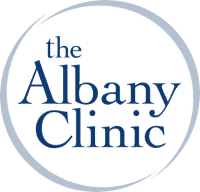Stellate Ganglion Block (SGB) for Depression

Kimberly Mercille • May 27, 2025
Stellate Ganglion Block (SGB)
is an emerging mental health treatment that targets key mechanisms linked to depression. In this article, we’ll discuss the science behind SGB and its potential benefits. If you or someone you know is struggling with depression, this information can help you make an informed decision about whether SGB might be the right option.
What is a Stellate Ganglion Block (SGB)?
What is the Stellate Ganglion?
The stellate ganglion is a cluster of sympathetic nerves located on each side of the neck near the first rib. These nerves are part of the autonomic nervous system, which controls automatic body functions like heart rate, blood pressure, and digestion.
The term "stellate" means "star-shaped" because the ganglion often looks like a star under a microscope. It helps regulate the body's stress response by controlling norepinephrine, a chemical that triggers the fight-or-flight reaction.
When this system becomes overactive, it can cause various physical and psychological problems, including depression. Stellate ganglion block (SGB) therapy may help by reducing the activity of the stellate ganglion, calming the fight-or-flight response, and lessening the damaging effects of prolonged nervous system stress.
How Does Stellate Ganglion Block Work?
Stellate Ganglion block (SGB) is when a local anesthetic is injected near the stellate ganglion. These drugs inhibit transmission between nerve cells, dampening activity in the ganglion. They typically include lidocaine, bupivacaine, or mepivacaine, which are sometimes combined with a steroid medication. Patients may also receive another medication to relax them before treatment.
SGB is typically performed using ultrasound guidance. The injection process lasts no more than 10 minutes, but patients will motinoted for another 30-45 minutes after treatment to ensure their safety.
How Does Stellate Ganglion Block Work for Depression?
Chronic stress is a major contributor to depression and is often linked to an overactive sympathetic nervous system. People with depression commonly show high levels of cortisol, a hormone that plays a key role in the body's stress response, in their blood stream. Cortisol is helpful in small doses, but when chronically elevated, it can disrupt neural circuits in the brain.
Excessive cortisol can lead to:
- Neurotoxicity - Cortisol can be toxic to nerve cells, especially in the hippocampus, which is crucial for memory and emotional regulation.
- Overinflammation - Cortisol increases the activity of the body’s natural defense system, resulting in the system causing damage to nerve cells.
- Impaired synaptic plasticity - Cortisol inhibits the capacity for the brain to “re-wire” itself. This makes it harder for people to adapt to stressful situations and learn new patterns of behaviour.
- Disrupted sleep - High cortisol can prevent people from sleeping well. During sleep, restorative biological processes occur in the brain, and excess cortisol can prevent these from happening.
SGB decreases sympathetic nervous system activity, which can reduce cortisol levels. This can help restore function in brain areas and pathways associated with positive mood, emotional regulation, and stress resilience.
Evidence Supporting SGB for Depression
To date, there’s very limited evidence supporting the use of SGB for depression. One pilot study found that SGP significantly reduced depression symptoms in people with treatment-resistant depression (TRD) and was well-tolerated. However, there was no significant difference to the placebo group and the sample size was very small.
Nonetheless, multiple lines of research show that SGB can alleviate symptoms of post-traumatic stress disorder (PTSD), which shares similarities with depression. In a trial of
SGB for PTSD, participants reported significantly lower scores of depression following treatment.
Who May Benefit from SGB for Depression?
SGB is primarily utilized for treating PTSD, so individuals with PTSD who also experience depression may find SGB beneficial. Additionally, SGB has shown potential in alleviating anxiety symptoms, suggesting it may be advantageous for those dealing with both depression and anxiety.
Because SGB isn’t approved by the FDA, it is typically only used when standard treatments like antidepressants and psychotherapy haven’t worked. SGB is an “off-label” treatment, much like ketamine therapy or brain stimulation therapies.
Importantly, SGB may not be suitable for everyone because of medical reasons. Contraindications include:
- Recent myocardial infarction
- Coagulopathy or anticoagulant therapy
- Glaucoma
- Pre-existing contralateral phrenic nerve palsy
- Severe emphysema
- Cardiac conduction block
Potential Risks and Side Effects of SGB
Common Side Effects
Most side effects of SGB are temporary and resolve as the anesthetic wears off. These may include:
- Hoarseness or Voice Changes: The proximity of the stellate ganglion to nerves controlling the voice box can lead to temporary hoarseness.
- Drooping Eyelid (Ptosis): Temporary drooping of the eyelid on the side of the injection may occur.
- Red or Bloodshot Eyes: Some individuals may notice redness in the eyes following the procedure.
- Watery Eyes and Nasal Congestion: Increased tearing and nasal stuffiness are possible but typically short-lived.
- Sensation of a Lump in the Throat and Difficulty Swallowing: Some individuals may experience a sensation of a lump in the throat and have difficulty swallowing after the procedure.
- Warmth or Tingling in the Arm or Hand: A warm or tingling sensation in the affected limb may be experienced temporarily.
Although uncommon, some individuals may experience more serious complications, such as nerve damage, seizures, and allergic reactions.
Given the potential risks, patients interested in SGB at the Albany Clinic will have an in-depth consultation with one of our qualified healthcare professionals before undergoing treatment. They can assess your medical history, current health status, and the potential benefits and risks of the procedure in your specific case.
SGB for Depression in Illinois
If you're in the Carbondale area and interested in the potential benefits of SGB for depression, the Albany Clinic is here to help. We specialize in innovative mental health treatments, including SGB, which has been shown to provide rapid relief from mental health symptoms, with effects lasting several weeks. Our experienced team offers personalized support, guiding you through every step—from determining if SGB is the right option for you to exploring alternative treatments and financial considerations. Contact us today to learn more about how we can support your mental health journey.






